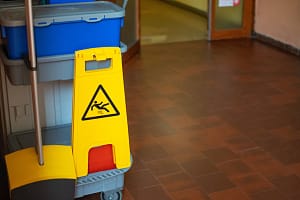A fire in the workplace is something that can occur within a workplace, organisation, business, or every type. These fire hazards can lead to potential injuries or ill health to employees, destroy properties, or in worse scenarios can even result in accidental deaths if not controlled or managed properly.
Fires could occur anywhere from faulty equipment, to electronic devices, or due to everyday work activity. Because of these unpredicted fire incidents, businesses must have in place adequate fire safety procedures and arrangements to control and manage the hazard.
This post is an in-depth explanation of the fire hazards, incidents, and the types of fire extinguishers to identify, control, and manage the risk as well as protect the safety and health of their staff.
Fire accidents and incidents statistics
The US Fire Administration or USFA statistical reports explore aspects of the US fire problems that affect individuals in their daily lives.
The reports briefly address the nature and relevance of specific fires and fire-related problems that can result in severe fire incidents and risks.
Most of the fires are preventable, according to the Health and Safety Executive (HSE). Those responsible for the safety and prevention of their workplace and the staff members must adopt the right procedures and behaviors to protect the health and safety of every individual.
Employers are required to conduct suitable fire risk assessments and keep the record up to date to ensure that they are adhering to the health and safety legislation with regards to the Regulatory Reform (Fire Safety) Order 2005.
Based on their risk assessment finding employers must take adequate fire safety measures to ensure that they are ensuring safety within their workplace and business.
Different types of fires
Before understanding which types of fire extinguishers are appropriate for use, it is important to understand the types of fires.
Fires are classified into six categories:
Class A – Class A fires are combustible materials caused by flammable solids. Such fires contain solid materials like wood, paper, or textile.
Class B – Class B fires include flammable liquids like petrol, diesel, or paint
Class C – Class C fires involve flammable gasses, such as methane, propane, butane
Class D – Class D fires involve flammable metals like magnesium, potassium, or lithium
Class E – Class E are those involving electrical equipment such as laptops, computers, photocopiers, etc.
Class F – Class F fires mostly occur in commercial kitchens using cooking oils. It is typically known as chip-pan fire
Fire extinguishers based on the fire types
1. Dry powder fire extinguishers
The dry powder fire extinguishers are used on classes A, B, and C and electrical fires. They can be recognized by their blue label stating ‘powder’. To extinguisher fires using dry powder extinguisher, hold jet at the base of the fire until all flames are extinguished. Powder fire extinguishers are one of the most effective types out there. Their compact size and high performance make them perfect to work in high-risk areas.
2. Water fire extinguishers
Water fire extinguishers are ideal for class A fire types. This is because the pressurised water that is released from the extinguisher can permeate into the core of burning material to cool them. These extinguishers are aimed at the base of the fire with a sweeping motion carried out until the fire is extinguished.
3. CO2 fire extinguishers
The carbon dioxide (CO2) fire extinguishers are used for class B fires. They are recognised with a black label on them. To extinguish the fires using the CO2 fire extinguishers, aim the horn at the base and sweep the jet across the area of the fire.
4. Foam fire extinguishers
Foam fire extinguishers are best for class A and B. They are identified with a Cream label on them and are used in a sweeping motion to extinguish the fire.
5. Wet chemical fire extinguishers
Wet chemical fire extinguishers are primarily used for class F fires. However, they can also be used for class A and fires and are classified with a yellow label on them. They are used in a circular motion to extinguish the fires effectively.
Fire extinguisher training
Fires can be a serious threat to businesses, workplaces, and organisations that can pose serious threats to the well-being of individuals. Therefore, employers and business owners must have adequate and effective fire prevention ways to prevent the hazard, fire extinguisher training is one of them to make responsible persons competent enough to mitigate the risk.
Conclusion
This post is a detailed explanation of the types of fire extinguishers based on the fire types to ensure adequate fire prevention measures are in place to control the risk.
Fire hazards can pose severe health risks to businesses in terms of legal, moral, and financial claims as well as loss of lives, and damages to the properties.
Therefore, responsible persons must have adequate measures, guidance, and training to control and mitigate the risk.






Leave a Comment